Ever since my husband retired, we have been spending five to six months of the summer in Mashobra, a small hamlet in Himachal Pradesh. Away from the clamor and effluence of the city, it is a tranquil haven of sorts.
The journey from Delhi to Shimla takes anywhere between 10 to 12 hours depending on traffic and the number of stops you want to make. Over the years, we have discovered great locations to take coffee breaks, the best spots to pick up the finest pickles, the special tea/pakora corner, the site for the choicest tandoori paranthas and most importantly, the ideal places to use the restroom. Believe me, it’s a great comfort to go to these familiar places and be greeted cheerfully by people who feel like comrades now.
Before we acquired this delightful summer abode in the hills, we would plan a getaway every summer. Whether it was a vacation abroad or within the country, the few days before travel were a nightmare. From thrashing your itinerary with the travel agent, ticketing, insurance, standing in queues for visas, acquiring foreign exchange, packing and a hundred other things in the peak of summer was simply grueling. The fear of missing flights, planning too much, planning too little, disliking the hotel, getting sick, bad weather, and hidden costs left one exhausted, irritable, and apprehensive. After all the scramble, one could get away maximum for a month only to return and endure the rest of the protracted summer. Moreover, a short holiday leaves one dog tired, as you aim to pack in as much as possible. When you get back, you need time off as you feel deadbeat instead of being re-energized.
Coming to the hills, on the other hand, is a euphoric experience. The journey itself is enriching. Leaving early in the morning, we stop at our designated places for a tea break, breakfast, and coffee and collect our pickles. Once the mountains start, we switch off the AC, put down the windowpanes, inhale the cool air, and let it run through our hair. The winding narrow roads have their charm. Ascending at a relaxed pace, we admire the beauty of our surroundings. The road is lined with deodar, pine, and rhododendrons trees. The primeval hills are covered with wild daisies and beautiful ferns, giving them a mystical appearance. Some tree trunks are entwined by creepers with bright red flowers. Nature rustles up these breathtaking marvels.
Speaking to people who have been coming here for years and are residing in these areas, I was quite surprised about their reaction to the so-called “progress” in terms of the state’s offerings to tourists – sophisticated highways as well as increasing hotels and housing developments in the region.
“I miss the old narrow winding road from Kalka to Shimla. Call me old-fashioned, but that road made me feel safer than ever, and the nostalgia attached to it was unmeasurable. The conifers hugged the road. That’s how close they were, and the journey replicated one out of a fairytale. Traffic was scarce and one reached Shimla leisurely, which is the precursor to a holiday. Now, with the new highway, one feels like riding a perilous roller coaster that could cut our life’s journey by way of landslides and rock falls. Trees have vanished from our approach and the huge rocky mountains stare at us like monsters waiting to gobble us up. The toll plazas only add to the chaos, and during the season it is torture to line up and inhale the diesel fumes of trucks and buses. This is perhaps the price one pays for developmental work, which is only harming our environment and causing untold misery and pain to humanity,” said Geetanjali Bajaj, who has been coming to Shimla for years now.
After the initial unpacking and settling down, which doesn’t take more than a day, we are ready to absorb the magnificence of our ambiance. If you sit by the window and look out, the panorama changes every few minutes. We have witnessed double rainbows, multifarious colors in the sky, and clouds floating by as if kissing you leaving a moist impression on your face. The misty mountains during the monsoon season transport you into a wonderland of serenity.
Regrettably, we have also seen the transformation of this peaceful small town in just a couple of years. Its tiny stores are equipped with the rarest of grocery items. Earlier, items such as tomato juice, tonic water, olives, mustard oil, olive oil, and marmalade were unheard of. Surprisingly, we didn’t miss all this much when they were not available. We used our stocks of fancy groceries judiciously and handed over the list of things we required to whoever was coming from a big town. If one didn’t have something, one improvised.
Now, little storerooms have all this and more. The owners are visibly more prosperous. Affluence brings on object d’art which are cars, television sets, computers, Wi-Fi, and mobile phones. Now the archaic countryside is dotted with ghastly WiFi/mobile towers and TV dish antennas. Picturesque trekking trails are swarming with parked and moving vehicles. There have been landslides, and trees have been uprooted on these charming tracks. Believe me, when you see a 100-150 foot pine tree with a trunk 6 feet in diameter lying across the road with most of it jutting into the valley, it appears like a huge lifeless dinosaur crying out for justice.
People have displaced animals like monkeys and leopards from their natural habitat. As a result, there is a huge monkey menace in the area. The monkeys destroy the fruit trees and all possible vegetation. They require food to nourish themselves and devour what is available to them. Since we have invaded their territory, we must pay a price. There are numerous incidents where people have been mauled and bitten by these angry primates. Domestic dogs have disappeared, and are believed to have been picked up by leopards.
The unsolicited hotels and incongruous growth of housing complexes are another matter of woe. Not only do they spoil the natural topography of the expanse but to support the demand of the holidaymakers, there is an unsightly network of wires, dish antennas, water tanks and concrete jungles instead of the beautiful flora that used to prevail. Waste disposal becomes another nuisance. It is disgusting to encounter garbage dispersed down the hillside while on a walk down the pristine walking pathway.
In the mountains, one expends water prudently. Water treatment plants are built to support a certain number of inhabitants. But with the surge in tourism, most of the water is grabbed by the big sharks, leaving the locals devoid of the minimum quantity for sustenance. The substructure is not ready to take on this stream of traffic, resulting in unnecessary inconveniences for commuters and locals alike.
This year the fury of the rains and the devastation that has taken place in Himachal Pradesh has been making headlines everywhere. Rain lashes the hills every year with vengeance during the monsoons. However, they withstand it proudly holding themselves with dignity. Shimla has received this kind of rain in the past. What is so bad about this rainfall that everything is falling like a house of cards? Mountains are coming down as if made of mud. Bridges are getting washed away, roads are caving in. Houses, places of worship, and unauthorized constructions have been gutted, leaving hundreds of people homeless and dead. An enormous amount of money that was used up to make these four-lane highways has now been reduced to less than a precarious single lane. The express highways, as they were referred to, were saving just about an hour of road travel. Was it worthwhile to blast the mountains and shake their very foundation, cut thousands of trees resulting in deforestation, and have unplanned construction that fell like nine pins at the first sign of threat ensuing in the loss of thousands of lives? It is a colossal waste of human lives, money, and effort. Plundering nature for your benefit has misfired miserably.
Some years ago, we had visited the Canadian Rockies. There were small settlements like the Banff National Park and Jasper. They are the cutest little places I have seen. Everything was perfect as if in a picture book. It was amazing to learn that the population in these towns consisted of just about 6,000 to 7,000 people. Despite 200 cm of snow in winter, the place is very well administered. People follow regulations, and strict action is taken against offenders. Why can we not have the same pride for our towns and enforce rigorous penalties for the perpetrators?
What right do we have to cut thousands of trees, explode the mountains, build without paying heed to any safety norms, and use substandard material to construct retaining walls – the backbone of any type of construction in the hills? None whatsoever! Yet, we did it for some vested interest, greed, or worse, in the name of development.
When we make a mistake or commit a crime, the law punishes us but this time, we have ravaged nature. And nature is taking revenge.
Poonam Kirpal is a Post Graduate in Child Development from Delhi University. Essentially associated with academics at the school and college level, she has been in touch with the young and the old at a personal and professional level. A freelance counsellor, she has three books to her credit: ‘Fast Forward’, ‘Saccharine and a Lot of Spice’, ‘Amma’ and ‘Ma + Ma = Grandma’. You can read her blog at www.midlifeuphoria.blogspot.in


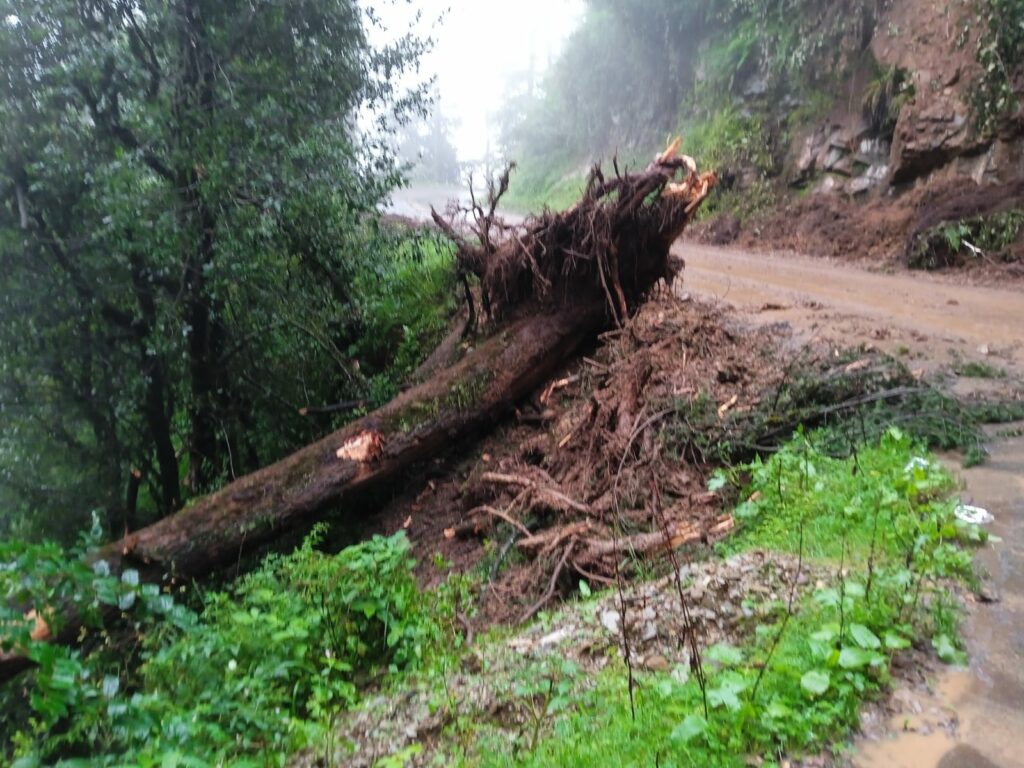
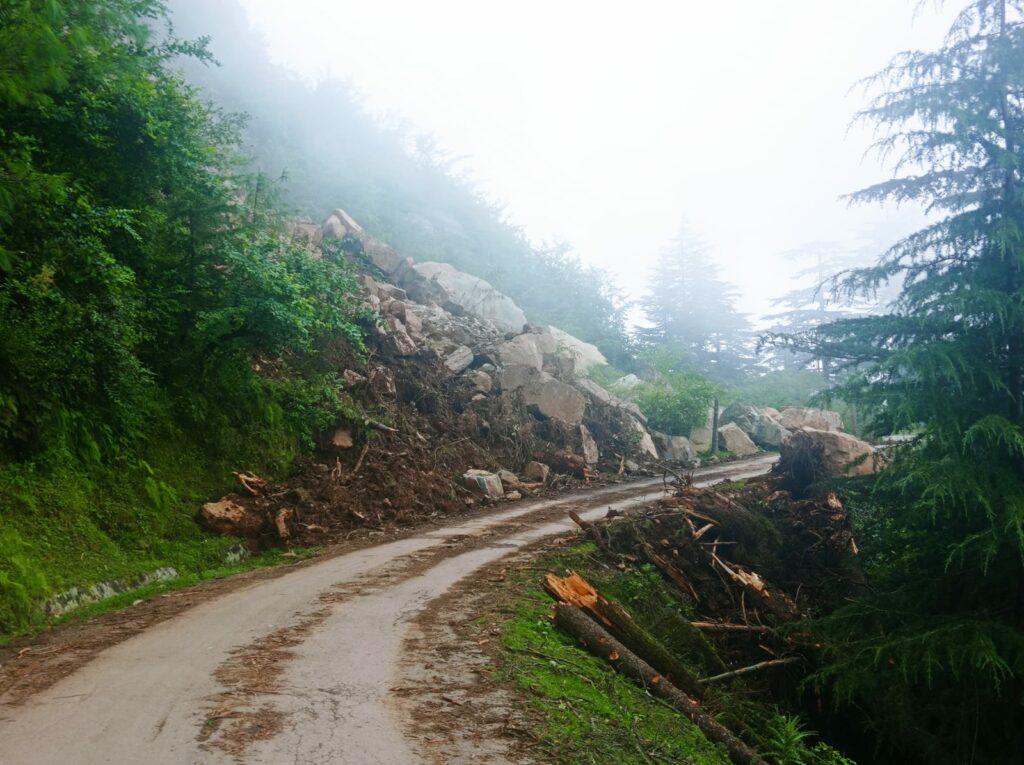
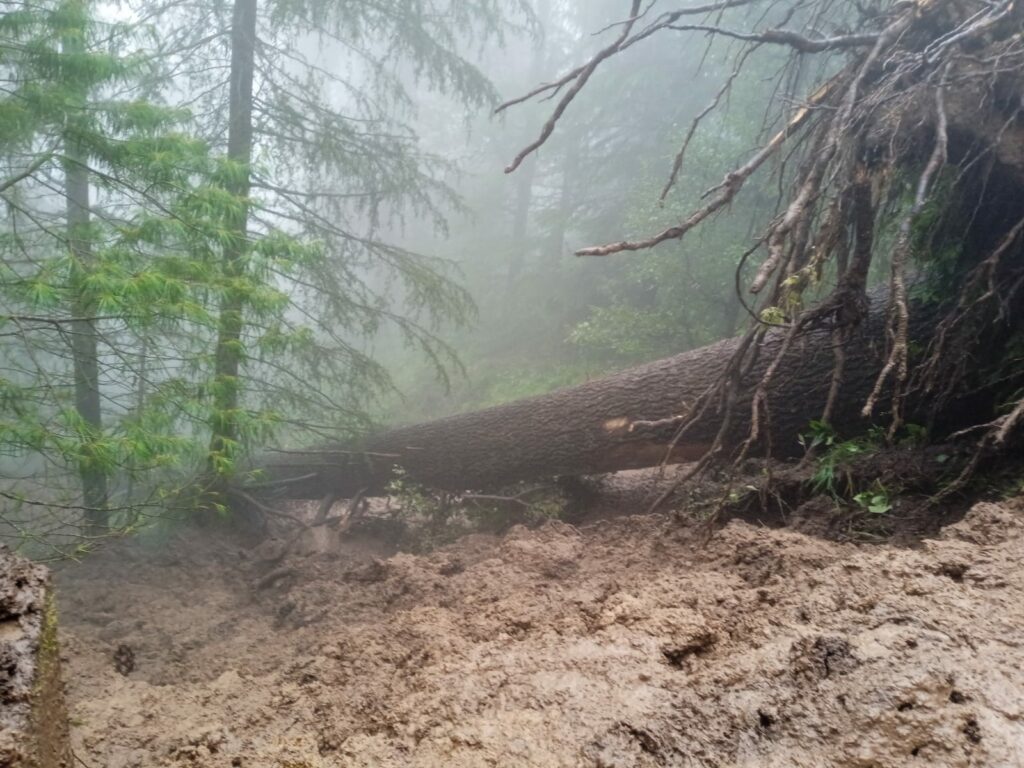
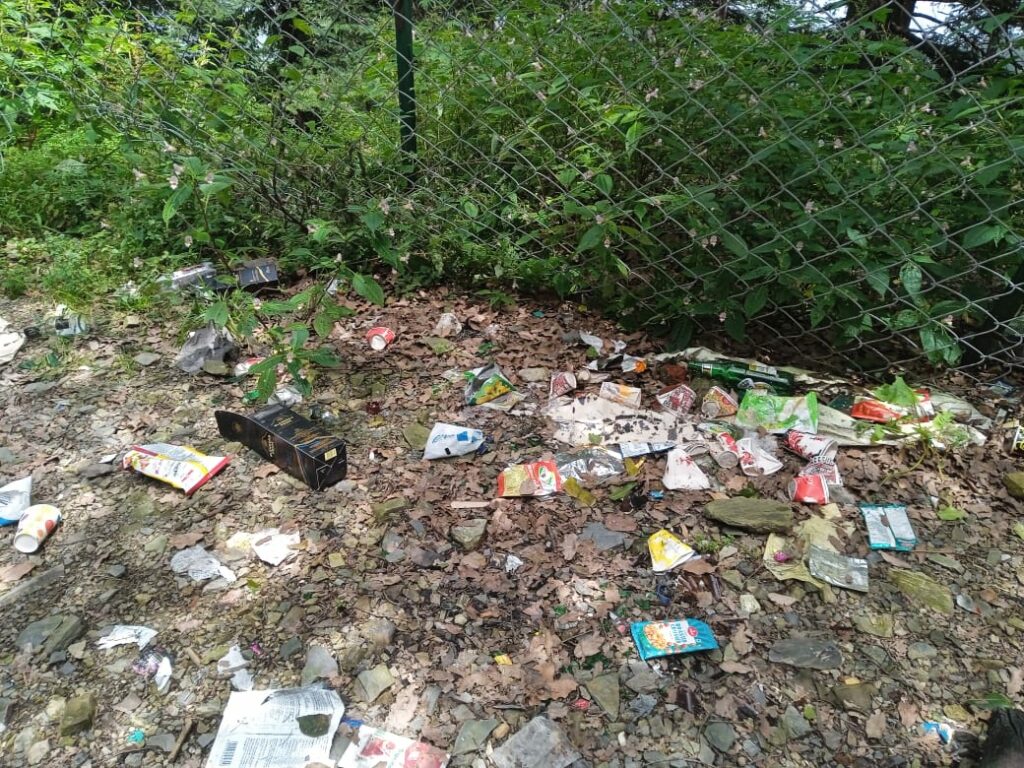
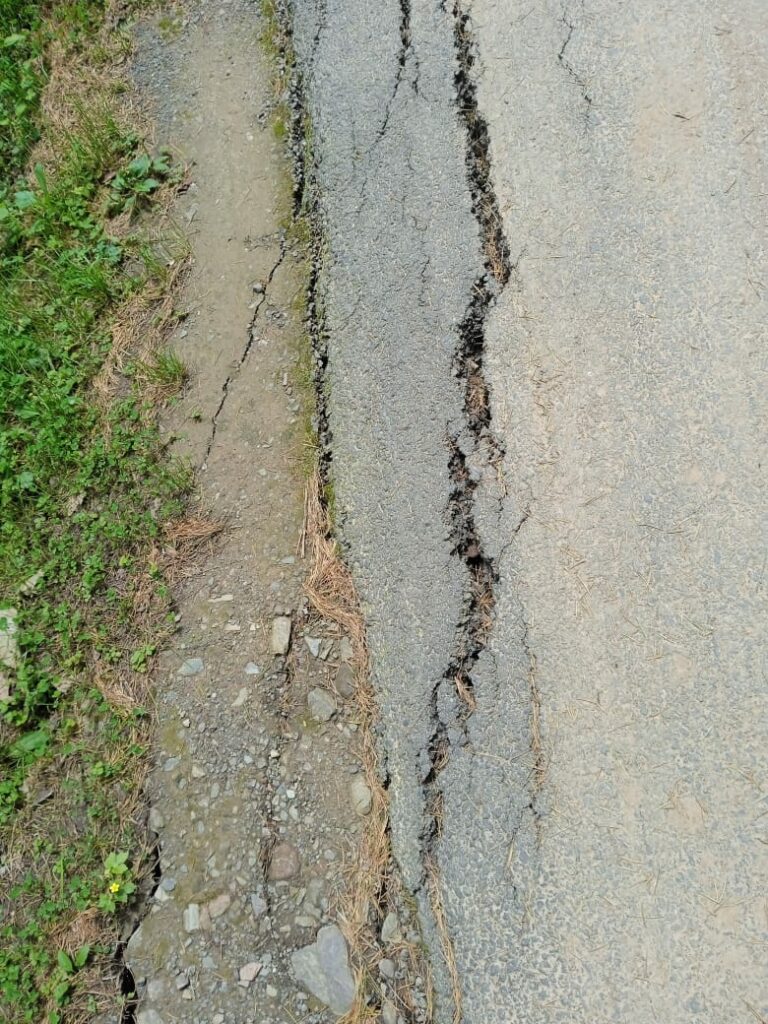


So well expressed ! The plight of the hills is so sad as sheer destruction in the garb of development struck the hills.
I too have been visiting Dalhousie since my parents decided to buy a summer home there in the 70’s. Over the years the serene quaintness of the guarded mountains was invaded by tourism.The worst was that the local population was happy to ravage their haven without a thought. There are no experts or well versed town planners guiding or limiting the extent of well defined development that the area can safely absorb.
Big touristy towns no longer hold attraction to me Arti. I have found my own private havens in the state which I don’t divulge to all and sundry.
I have 20 such quaint villages in my list. Most of them don’t have a car worthy road, but I don’t care. I drop my car off at the major road, and last 15-20 kms is pure biking. Even trekking at some locations.
The hills do still have it. It’s just that the popular locations are all destroyed beyond repair.
Sad.
Well your beautiful article on the manner in which the greed of mankind has ravaged the beauty of our hillls has kind of
struck me from within!! I myself grew up in Shillong, a beautiful hill station in the NorthEast which in itself is in a sorry state as of now as due to chopping down of trees mercilessly in a 360 segree arc in the name of unplanned development. When I was young I always used to tell my friends that one day in the name of development people are going to destroy the beauty of this lovely place and I was so damn right! I believe the unscupulous use of the social media has also played its role to perfection! Anyway I hope The Almighty comes to our rescue before we destroy ourselves completely as the saying goes better late than never!
I had visited Himachal in the late 1990’s and so much wanted to refresh those fond memories and yet after reading through your article I dare not revisit the popular destinations as of now but I really would love to feel the beauty of some of those untouched places where the wrath of mankind is yet to reach!!
It’s people like you and me who love the hills feel the anguish. Government should take strict action immediately to preserve what is still left of these pristine mountains.
Totally in agreement with you. Thanks
WOW beautiful locations ma’am very close to god I can easily connect with these places as my birth place Kashmir is also equally having beautiful locations and places to visit
I used to go for tracking with my friends and enjoy the beauty of nature
Blessed to be able to enjoy and preserve this beauty of nature.
Hope we can preserve this beauty for future generations to enjoy.
Presicely you have depicted the whole menace through which we are going even now as this time thousands people become homeless many of us has lost our near and dear ones still the nature is aggressive and recovering its toll .
But my unanswered question is why only we inocent and rustic people of villages and remotely scattered and inhabitants of himachal pradesh or any other hilly areas of the country would every time pay its toll to nature furry .
But perhaps the way you expressed your worries and also love and affection is appreciable, please do continue share yours valuable experiences and thoughts.
Thanks for your feedback. This year has been disastrous all around the world. There have been unexpected floods, fires and hurricanes. We feel the anguish of the hills as it’s closer to us. However unfortunately a lot of the damage is man made.
Outsiders have bought land and constructed houses in these small quaint towns and it is a question of supply and demand. if people like you from the plains come and Settle down here for the entire summers it is evident that the shopkeepers also will buy more things and motorists are eventually going to come when infrastructure improve.So this was bound to happen. had outside settlers left places like mashobra in its original form and not constructed summer homes, things would be different.
Thanks for adding up to the overcrowding of these hills.
What about the number of people going up to the hills ? If tourists increase a hundred fold why complain of the infrastructure of wide roads and consumerism? You would take twice the time on narrow , bottlenecked roads of the past .It’s all very well being a nostalgic- romantic, feeling if you can aggress on the rights of the locals, then many more will follow you and the complaints can only increase. This is an irreversible process. Bahadurshah Zafar hadn’t let the railway come in too close to his Shahjahanabad palace because it would foul up the air !
We at Neemrana are trying to preserve some of the vestiges of the past , but it’s a cross-current battle
I agree with you. We want development for all but not at the cost of ruining the serenity of the place. Government should have taken stringent action whence the development was exceeding the infrastructural parameters.
I agree with what you are saying but we’ve been coming here for a decade and a half now and I am talking like a local. Why couldn’t the government put a stop to building when the infrastructure was collapsing? We could have continued to enjoy the beauty of the place without peril.
Every single word is absolutely right,
Now these days Neta,s and beurocrates nexus is running the show , So the nature takes what they have taken form nature,
It’s just beginning, We will see nature fury very soon
Let’s keep our fingers crossed and wish the government wakes up before it’s too late.
Like urself, i used to visit Himachal every year enjoying exact the same way u described.
Everything stand destroyed..
True we should have never allowed senseless so called development in the Hills and that too by a corrupt eco system Himachal and Uttarakhand will take years to recover if at all from this year’s destruction in particular Civil Society has no say in such madness
Sad state of affairs in the hills for sure and like you said most of it is human created which is challenging nature leading to destruction.
Recommend this very blog be forwarded to the PM Shri Narendra Modi and to Mr Nitin Gadkari – these two CAN take corrective action.
Thanks for your comments. I am sure the government is well aware of the consequences of the so called development. Hope some action is taken immediately to avoid further devastation.
Loved your writeup…can’t agree more with you
Thanks
Excellent article. I too have been going to Shimla every 2 months since the last 15 years (barring covid times) and the imagery the writer has painted reminded me of days gone by. She is right. The cost benefit ratio of development and roads is abysmal. And we have paid the price today, this year.
I personally am in full agreement with the writer. It is our greed and the quest of development which has ravaged the calm hills. Hills are to be respected as they are and not try to change them. Rather the humans have to know to adjust with the hills to enjoy their serenity and chill. But alas..
Locals shouldn’t get modern stuff just because tourists love to visit a small town in the hills. Locals shouldn’t get stuff like Gouda or Cheddar Cheese, Korean Ramen, Wasabi, because it will cause landslides.
All I see is a very narrow point of view of a person from the plains.
My grandfather used to walk 3 days to Shimla just to get a few bags of salt. But then the govt. decided to blast the mountains and create roads. Now we get salt at our door step.
My father’s sisters died when they were young because the roads were too narrow and they couldn’t reach the hospital on time.
Only priviliged people can say that they miss the narrow roads of the old times, you didn’t have to suffer those narrow roads.
Precisely Doom Guy. This is really silly to say “Oh no, they have wifi now!”. We want wifi so we can also access information, ecommerce etc at the click of our fingers.
It’s great to point out the mismanagement of resources or the poor rubbish collection.
But please check your privilege. The wifi and dish satellites did not cause landslides. Wider roads are not the problem. Too much strain on the mountains is.
People of the mountains have survived without the tourism also. Maybe we should limit the number of tourists.
Totally agree with you. Number of tourists should be restricted. The WiFi became a necessity here as during the covid young tech people came here for extended periods as they could work from home. The service providers were in a hurry to give connections to everyone without looking at the asthetics of the surroundings. It was a question of make hay while the sun shines.
Sorry to hear about your experiences in the hills and the misfortunes your folks had to undergo because of the poor infrastructure. However development should be more orderly and can be stretched only to an extend. Don’t push it that it snaps. No one is against development but it should follow the topography of the place and should be handled more scientifically.
Though your article is thought-provoking…. I do wonder how you can even begin to compare our hill stations to locations like Banff in the USA. Our main problem is that of over population….if that issue is addressed properly the rest will automatically fall in place. Just as you have gone and bought yourself a cute summer home the others who can afford it have gone and done just the same. And since there is just so many of us the hills too have to take the brunt….be it in terms of over development, shops springing up to cater to people like you, mega highways being built etc. Finally the hills can take only this much and no more. Construction should be completely stopped in the hills, all unauthorised structures should be pulled down, the idea of summer retreats for the well healed should be brought to an end… Let the hills belong to the locals only…. Only then will this pristine area will remain its charm and safety.
I completely agree with you. When we bought the place Mashobra was a charming little village. Now I am reacting like a local since we have been coming here for the last 15 years. Why couldn’t the administration put a stop to building when they saw signs of overcrowding. We didn’t spoil the topography but the greed of the builders and others with vested interests did it.
Sad to read about the damage being done to fragile mountain ecosystems in the guise of development. We should follow the Bhutan model ,strictly limit overcrowding and regulate development immediately.
Absolutely
Totally agree with you
You are bit late or too early to witness Shimla mashobra as Canada . If you were there in colonial era and owned a cottage in mashobra you could have witnessed it as canada. Everything has a cost. One can’t control nature to take back what humans encroached. Moreover the chronological view of this blog seems to witness against devlopment. What have you contributed to the place where you spend six months of year. Making comments on devlopment is easy, one should watch what they are doing.
I have nothing against development. But development should be systematic and adhere to the safety norms of the region. Unplanned development without infrastructure becomes a nuisance for the locals as well as the tourists for whose benefit it was supposed to be for.
Paradoxical though it may seem, but you yourself are part of the crowd that you believe are bleeding nature!
Tourism and industry are the bane of this hill State.
When we came to the hills, Mashobra was an amazing village. When the infrastructure was collapsing some action should have been taken.
It was a delight to read Ms. Kirpal’s exposition and sadness at the devastation caused by man to the pristine hills. The hills have been the lungs which protect the plains. Their wanton destruction for commercial gains tells us about ourselves being monsters of the negative kind. Ms Kirpal is right that nature is hitting back. Why not we ask / we have taunted nature, tinkered with ecosystem which have been the source of sustenances and must pay the price. Kudos – hope nature restores the damage caused by man.
Thanks for your feedback. It’s people like you who are in a position to influence the government to stop this carnage.
Thanks for your feedback. It’s people like you who are in a position to influence the government to stop this carnage. I wish many people stand up to preserve this beauty so that we can leave something valuable behind for our future generations.
It my home town and hence can’t express the pain of seeing it in such a state. When we were kids a room of 10*10feet was a luxury, but now everyone wants large spaces.
Small places were saving on energy and environment both.
Small road were really the 🧿. Over the years the side had foxed up. Now widening has loosened all the soil and see the fun.
Lots more can be written and said, but nothing can bring back the loss.
The problem is not tourism, tourists, summer homes or population as pointed out in some of the comments to the well intentioned blog post of Mrs. Poonam Kirpal.
The problem is our development model and poor planning and implementation of poorly conceived policies.
Let’s take the example of Switzerland which has similar topography to Himachal. The land area of Himachal is 55,000 sq kms whereas that of Switzerland is 41,000 kms. The population is 8 million and 9 million respectively. The annual tourists (pre-covid) are 17 million and 12 million.
Anyone would say that the numbers are not very different.
The difference is that in the case of Himachal our successive governments have gone about development in a haphazard manner with very poor planning and even poorer implementation. The widening of the Kalka – Shimla highway is a stark example of this poor conception and poor execution of ‘development’ projects in our country.
Alas Himachal could have been another Switzerland …. God knows we have much more natural beauty!
You’ve hit the nail on the head
Since the monsoon disaster has struck Himachal this year, this has been the familiar narrative that comes across multiple platforms and dominates discussions. All we are doing is ruing about the impact of mindless development and wishing if things could be better without committing to any change on our part. We are unwilling to accept that pursuit of economic development comes with the bargain of exploitation of ecology and it’s only fair to take it on the chin and stop cribbing unless we want to take the responsibility to change things and propose an alternate lifestyle and reimagine the development model.
Furthermore, this article strikes a jarring note and comes across as a perspective of a priveleged and affluent citizen who points the problems but does not take any responsibility and ownership to set things right.
Climate change is a global phenomena. Local disasters may have local contributory factors, but vagaries of weather and climate are also influenced by commercial and industrial activities happening elsewhere in the country or the planet. It appears sanctimonious when privileged people want to see hills in their pristine glory but would not acknowledge or realise their own contribution to carbon footprint and environment damage which is directly proportionate to their affluence. They happily glob trot for holidays, are active contributors to economic activities proportionate to their income but would long for a serene environment in the hills for them to unwind for a couple of months in a year.
If there is no acceptance or realisation of one’s role in ecological degradation, how is improvement they desire going to happen? Who takes the onus to maintain hill stations for the pleasure of priveleged people? Are the people of the hills supposed to go back to decade old sustainable lifestyles and hence restrict access to all modern day amenities which are being enjoyed by priveleged people?
When people of the hills had no roads and transportation to their homes they would walk miles and lug all the provisions on their backs. One would lose precious lives because sick people could not reach health facilities easily on time. One would have low income levels because tourism and horticulture which are the mainstay of the economy are rendered unviable because of lack of development. People would be left out of the digital and information revolution because hideous cell towers litter the landscape. It would be interesting if the author showed intention to build a summer getaway in a remote area like kilar or pangi in chamba district rather than chose a convenient and well connected destination like mashobra. After all who wants hardships for self when others can be lectured to do the heavy lifting?
Yes, the residents of the hill states have been greedy about making money, have cut corners, flouted norms and turned hills into a catastrophic disaster waiting to happen. But how are they different from people elsewhere in the country?
I would have welcomed a thought provoking article that provoked that raised questions about how we define development, and what changes in our mindsets and lifestyle need to be made to ensure that we ensure sustainability.
I agree to most of what you say. However as mentioned by you pristine places like Kilar or Pangi in Chamba would see the same fate as Mashobra if unplanned development takes place there. When we got a place in Mashobra it was a quaint little town which now is anything but that. Development should be there and better roads are a must but one should do it in a planned manner and once the the infrastructure shows signs of collapsing proper measures should be taken to stop the so called development.